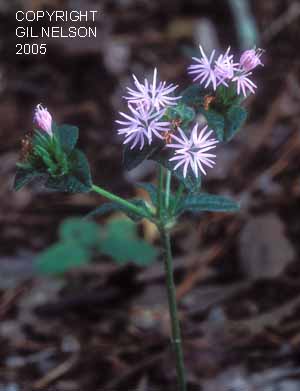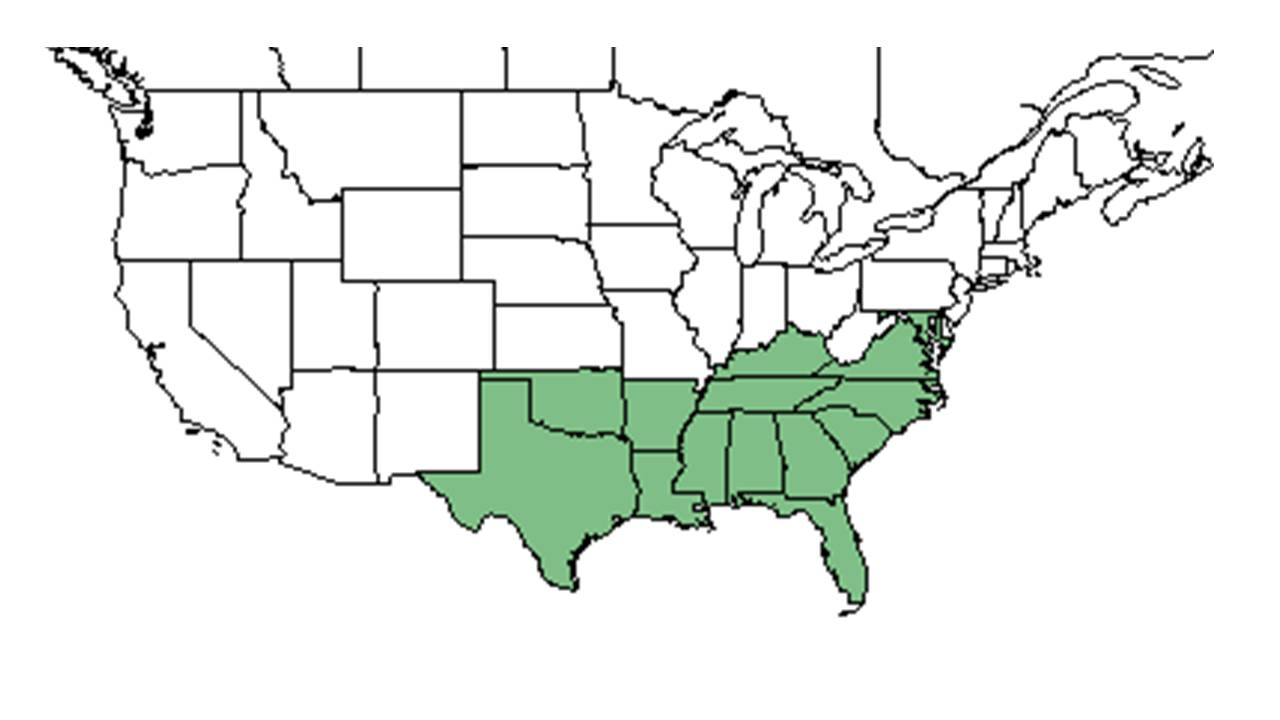Difference between revisions of "Elephantopus tomentosus"
| Line 43: | Line 43: | ||
===Use by animals=== <!--Herbivory, granivory, insect hosting, etc.--> | ===Use by animals=== <!--Herbivory, granivory, insect hosting, etc.--> | ||
| − | It consists of approximately 2-5% of the diet for large mammals.<ref>Miller, J.H., and K.V. Miller. 1999. Forest plants of the southeast and their wildlife uses. Southern Weed Science Society.</ref> | + | It consists of approximately 2-5% of the diet for large mammals.<ref>Miller, J.H., and K.V. Miller. 1999. Forest plants of the southeast and their wildlife uses. Southern Weed Science Society.</ref> ''E. tomentosus'' is considered to have fair forage value.<ref>Hilman, J. B. (1964). "Plants of the Caloosa Experimental Range " U.S. Forest Service Research Paper SE-12 </ref> |
<!--===Diseases and parasites===--> | <!--===Diseases and parasites===--> | ||
Revision as of 14:19, 6 May 2019
| Elephantopus tomentosus | |
|---|---|

| |
| Photo taken by Gil Nelson | |
| Scientific classification | |
| Kingdom: | Plantae |
| Division: | Magnoliophyta - Flowering plants |
| Class: | Magnoliopsida – Dicotyledons |
| Order: | Asterales |
| Family: | Asteraceae ⁄ Compositae |
| Genus: | Elephantopus |
| Species: | E. tomentosus |
| Binomial name | |
| Elephantopus tomentosus L. | |

| |
| Natural range of Elephantopus tomentosus from USDA NRCS Plants Database. | |
Common name: Devil's grandmother; common elephant's-foot
Contents
Taxonomic notes
Description
A description of Elephantopus tomentosus is provided in The Flora of North America. It reaches a height of about 2 feet with flowers ranging in color from pink to purple as well as rarely white.[1]
Distribution
E. tomentosus is native to the southeastern Coastal Plain from Maryland south to the Florida panhandle, west to eastern Texas and Arkansas, and north up to western North Carolina and Kentucky. It is also native south of the United States to Chiapas, Mexico.[2]
Ecology
Habitat
Generally, this species can be found in usually fairly dry woodlands and woodland borders.[2] It has been observed in mixed woodlands, pine-hardwoods, edges of mixed hardwoods, in deciduous woodlands along river bluff, edges of rivers, longleaf pine-Turkey oak woods, open pinelands, and dry upland pine woodlands. Is also found in human disturbed areas such as roadsides and areas that have been clear cut. Requires some light to full light levels. Is associated with areas that have dry, loamy sand and sand soil types.[3] It also grows in pine-oak-hickory forest communities and lake shores.[4] One study in Mississippi found this species to be present in nondisturbed areas as well as disturbed areas by tornadoes, making it a perannial disturbance indicator.[5]
Associated species include Sericocarpus asteroids, Eupatorium album, E. perfoliatum, E. rotundifolium, Solidago rugosa, Helianthus strumosus.[3]
Phenology
E. tomentosus generally flowers from August to November.[2] It has been observed flowering from April through October.[3][6]
Fire ecology
It is found in areas that are annualy burned, such as longleaf pine terrain.[3]
Use by animals
It consists of approximately 2-5% of the diet for large mammals.[7] E. tomentosus is considered to have fair forage value.[8]
Conservation and management
This species is listed as endangered by the Maryland Department of Natural Resources, Natural Heritage Program.[9]
Cultivation and restoration
Photo Gallery
References and notes
- ↑ [[1]] Lady Bird Johnson Wildflower Center. Accessed: May 6, 2019
- ↑ 2.0 2.1 2.2 Weakley, A. S. (2015). Flora of the Southern and Mid-Atlantic States. Chapel Hill, NC, University of North Carolina Herbarium.
- ↑ 3.0 3.1 3.2 3.3 Florida State University Robert K. Godfrey Herbarium database. URL: http://herbarium.bio.fsu.edu. Last accessed: June 2014. Collectors: Loran C. Anderson, James R. Burkhalter, Robert K. Godfrey, Angus Gholson, Wilson Baker, Paul L. Redfearn, Jr., Richard S. Mitchell, John C. Ogden, Cecil R Slaughter, R. Komarek, R. A. Norris, and J. M. Kane. States and Counties: Florida: Alachua, Calhoun, Escambia, Gadsden, Jackson, Jefferson, Leon, Liberty, Okaloosa, Santa Rosa, Wakulla, and Walton. Georgia: Thomas.
- ↑ Bostick, P. E. (1971). "Vascular Plants of Panola Mountian, Georgia " Castanea 46(3): 194-209.
- ↑ Brewer, S. J., et al. (2012). "Do natural disturbances or the forestry practices that follow them convert forests to early-successional communities?" Ecological Applications 22: 442-458.
- ↑ Nelson, G. PanFlora: Plant data for the eastern United States with emphasis on the Southeastern Coastal Plains, Florida, and the Florida Panhandle. www.gilnelson.com/PanFlora/ Accessed: 6 MAY 2019
- ↑ Miller, J.H., and K.V. Miller. 1999. Forest plants of the southeast and their wildlife uses. Southern Weed Science Society.
- ↑ Hilman, J. B. (1964). "Plants of the Caloosa Experimental Range " U.S. Forest Service Research Paper SE-12
- ↑ USDA, NRCS. (2016). The PLANTS Database (http://plants.usda.gov, 6 May 2019). National Plant Data Team, Greensboro, NC 27401-4901 USA.